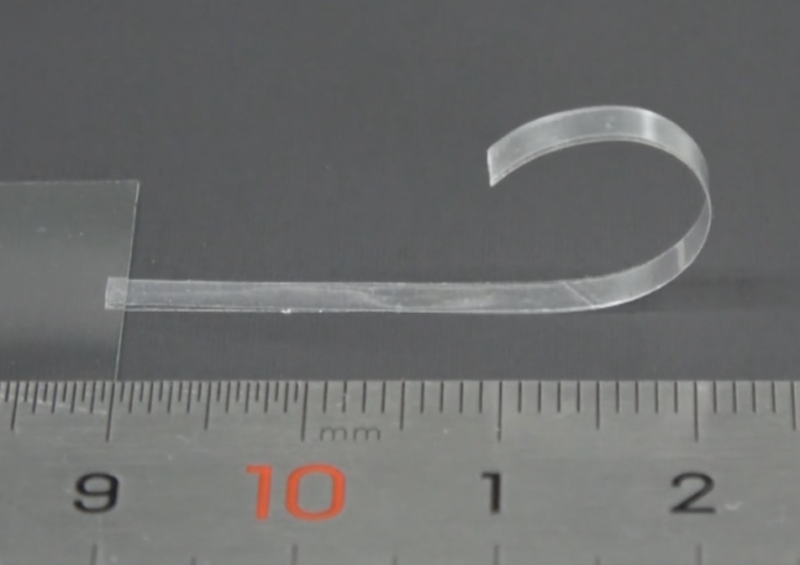Recent heatwaves have struck areas like Northern Europe and the Pacific Northwest that have traditionally gotten by without much air conditioning. As people in those regions adjust to the new reality, we'll likely see a change in electricity use, with surges in demand typical of locales farther to the south. The strain those changes place on the grid can add to the challenge of rapidly moving away from fossil fuels.
Materials that passively heat or cool an environment can cut down on the demand for energy by handling some of these needs without requiring the use of energy. Some of these materials reflect incoming sunlight to keep it from heating a space, while others actively radiate heat away into space, which is great if you're only worried about heat. But many of these areas experience seasons and have times where getting rid of stray heat will also boost energy use.
Now, a team of researchers at Nankai University has figured out a way to have it all: warming in cold air and cooling once things get hot—all without needing any energy input.
Sensing the heat
The basics of passive materials are pretty simple. For warming, you need a material that will absorb light and release energy in the form of heat. Cooling can be as simple as reflecting this light away. In a more complex form, it's also possible to incorporate materials that radiate energy away at infrared wavelengths that aren't absorbed by the atmosphere, thus allowing the photons to escape to space.
Typically, you're faced with a choice of one or the other—materials can't readily switch from absorbing to reflecting sunlight. The best you can generally do is switch an ability on or off so that (for example) a material stops reflecting sunlight under some conditions. But even some of these approaches have required energy to switch between states.
For the new material, the research team was inspired by the folding and unfolding of the leaves of mimosa plants, which change their shape based on environmental conditions. The idea was to use something like this to switch between heating and cooling states based on the temperature in the environment.
To get this idea to work, they used a polymer that changed its shape in response to temperature. The polymer was made of three distinct subunits that could adopt different conformations when placed under stress. When sheets of the polymer were stretched at high temperatures (90° C), they would expand and contract at temperatures typical of the indoor environment. This temperature-sensitive sheet was then merged with a transparent sheet that doesn't respond to temperatures. The resulting bilayer sheet would experience unequal stresses due to changing temperatures, causing it to roll up when cool and flatten back out when heated.
Rolling out the cooling
On its own, the temperature-sensitive sheet wouldn't be especially useful, so researchers had to combine it with two other materials. One was a third layer for the temperature-sensitive sheet with two key properties: it reflected visible wavelengths and emitted photons in the infrared, allowing it to radiate out heat. The second was a dark substrate that absorbed visible light.
The final device involved a layer of the dark substrate that, when exposed to sunlight, will absorb it and convert it to heat. On top of this is the three-layer sheet, which changes shape based on temperature and reflects sunlight while emitting in the infrared.
At low temperatures, the temperature-sensitive sheet rolls up, exposing the dark substrate that absorbs sunlight, causing things to warm up. Once temperatures rise, however, the sheet will unroll, covering that. Now, instead of an absorbent surface, the surface becomes reflective, keeping it from warming up the area. Any heat in the area covered by this system can radiate away, however, because the reflective surface emits in the IR.
The researchers, creatively, call these two states the heating and cooling modes. About 73 percent of the incoming sunlight gets absorbed when it's in heating mode. By contrast, switching to cooling mode means that only 35 percent of the incoming sunlight gets absorbed, and emissions in the mid-infrared increase by 67 percent.
While the reflective sheet is thin and looks fragile, the researchers tested one for over 500 rolling/unrolling cycles, and it survived without any apparent problems. The one problem the team saw was that the reflective layer didn't make solid contact with the unreflective one when it was unrolled, which limited the amount of heat that could transfer between the two. Since the reflective layer is responsible for radiating this heat away, this limited the system's overall efficiency.
Another obvious limitation is that this material needs a fair amount of space to work since the reflective surface rolls up into a tube. So that would need to be managed before this was incorporated into something like a building material. Still, as a first pass at a single material that adjusts itself to heating and cooling, the concept seems great, and it's possible some implementation details can be sorted out in future iterations.
PNAS, 2022. DOI: 10.1073/pnas.2207353119 (About DOIs).



3175x175(CURRENT).thumb.jpg.b05acc060982b36f5891ba728e6d953c.jpg)

Recommended Comments
There are no comments to display.
Join the conversation
You can post now and register later. If you have an account, sign in now to post with your account.
Note: Your post will require moderator approval before it will be visible.